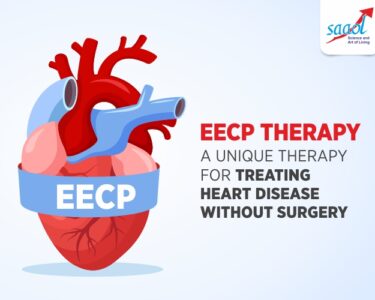3D Printing in Medicine: From Prosthetics to Organ Transplants
Introduction
In the realm of medical advancements, the marriage of 3D printing technology and healthcare has ushered in a new era of possibilities. The synergy between engineering and medicine has led to remarkable achievements, from fabricating intricate prosthetics to facilitating complex organ transplants. This article delves into the transformative journey of 3D printing in medicine, showcasing its wide-ranging applications, breakthroughs, and the boundless potential it holds.
3D Printing in Medicine: From Prosthetics to Organ Transplants
The intersection of 3D printing and medicine has brought about remarkable innovations, spanning from crafting functional prosthetics to pushing the boundaries of organ transplantation.

Crafting Personalized Prosthetics
Utilizing 3D printing technology, medical professionals can now create personalized prosthetics tailored to the unique needs and specifications of individual patients. This level of customization not only enhances comfort but also restores functionality, greatly improving the quality of life for amputees.
Advancing Surgical Planning
The precision of 3D printing has revolutionized surgical planning. Surgeons can generate detailed 3D models of patients’ anatomies, enabling them to meticulously strategize complex procedures. This level of preparedness reduces surgical risks, shortens operating times, and enhances patient outcomes.
read more about Technology in Modern Healthcare – Advancements Shaping the Industry”
Accelerating Bone Regeneration
3D-printed implants, often made from biocompatible materials, have proven instrumental in bone regeneration. These implants provide structural support and encourage natural bone growth, offering a viable solution for patients with skeletal injuries or defects.

Transforming Organ Transplants
Perhaps one of the most groundbreaking applications of 3D printing in medicine is in the realm of organ transplants. The technology holds the promise of creating functional organs through layer-by-layer deposition of cells. Although this field is still in its infancy, it offers a glimmer of hope for addressing the global organ shortage crisis.
Streamlining Drug Delivery
3D-printed drug delivery systems have opened new avenues for precise medication administration. These systems can be customized to release drugs at specific rates, ensuring optimal therapeutic effects and minimizing side effects.
“Medical Breakthroughs with 3D Printing”
In recent years, the collaboration between medical researchers and engineers has yielded remarkable breakthroughs, highlighting the potential of 3D printing in medicine.
Revolutionizing Prosthetic Limbs
3D printing has not only made prosthetics more accessible but has also enabled the creation of highly functional limbs. Complex joints and mechanisms can be integrated, allowing amputees to regain a remarkable range of motion and dexterity.

Customizable Surgical Tools
Surgeons now have the capability to design and produce customized surgical tools and equipment through 3D printing. This adaptability ensures that each tool is suited to the nuances of a particular procedure, improving overall surgical precision.
Personalized Implants for Patients
Whether it’s a dental implant or a cranial plate, 3D printing enables the creation of implants that perfectly match a patient’s anatomy. This personalization minimizes discomfort, improves compatibility, and enhances the longevity of the implant.
“Future Potential of 3D Printing in Medicine”
Looking ahead, the potential of 3D printing in medicine appears limitless, with ongoing research poised to unlock even more revolutionary applications.
Bio-Printing Organs
While the idea of 3D-printed organs is still in the experimental phase, researchers are making strides in creating functional tissues and even small organs. This could pave the way for a future where organ shortages are a thing of the past.

Enhanced Drug Testing
3D-printed organ models provide an innovative platform for drug testing, allowing researchers to assess the efficacy and potential side effects of new medications in a controlled and accurate environment.
Addressing Surgical Complexity
Complex surgeries often require the reconstruction of intricate anatomical structures. 3D printing offers the possibility of producing patient-specific models for surgeons to practice on, enhancing their confidence and expertise.
FAQs
Can 3D printing create entire human organs for transplantation?
While the concept is promising, the technology to 3D print complete human organs for transplantation is still in the experimental stage. However, significant progress is being made in bio-printing functional tissues and smaller organ components.
How does 3D printing improve prosthetics?
3D printing allows for the creation of personalized and highly customized prosthetics. The technology enables the design and fabrication of prosthetics that fit the patient’s unique anatomy, providing greater comfort and functionality.
Is 3D printing widely used in surgical procedures?
Yes, 3D printing is increasingly being utilized in surgical planning and the creation of surgical tools. Surgeons can generate accurate 3D models of patients’ anatomy, facilitating better preoperative planning and improving surgical outcomes.
What materials are used in medical 3D printing?
Medical 3D printing employs a range of materials, including biocompatible plastics, metals, ceramics, and even living cells for bio-printing. The choice of material depends on the specific application and desired properties.
How does 3D printing impact medical research?
3D printing accelerates medical research by providing researchers with precise models for experimentation. It aids in drug testing, anatomical studies, and the development of innovative medical devices.
Are there any ethical concerns with 3D printing organs?
The ethical implications of 3D printing organs include issues related to organ ownership, distribution, and potential inequalities in access. As the technology progresses, these concerns will need to be addressed collectively.
Conclusion
The amalgamation of 3D printing technology and medicine has birthed a realm of unprecedented possibilities. From crafting personalized prosthetics to pushing the boundaries of organ transplantation, this symbiotic relationship is reshaping the future of healthcare. As ongoing research continues to unlock new horizons, the journey of 3D printing in medicine holds the potential to revolutionize patient care and medical practices on a global scale.







 Viesearch - The Human-curated Search Engine
Viesearch - The Human-curated Search Engine
